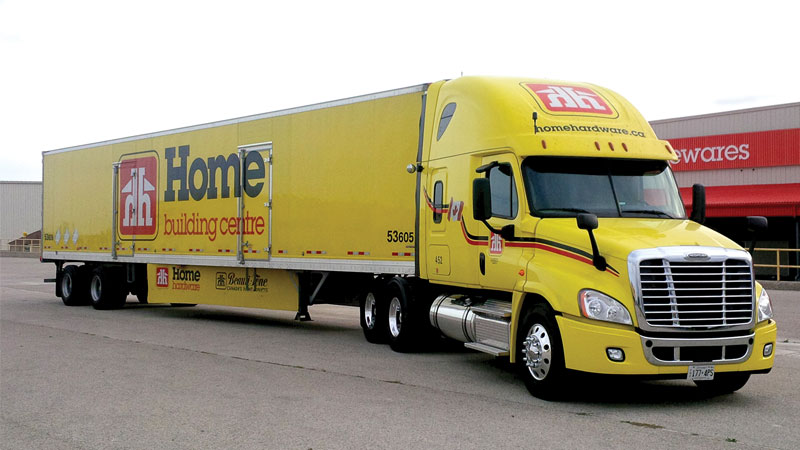The trucking industry has been abuzz recently over ELDs. The use of these systems to electronically record driver logging data is now required in the US (unless you use AOBRDs, in which case you are grandfathered-in and won’t have to move to a true ELD until December 2019) and Canada will follow suit shortly.
In our last issue we heard from ELD suppliers and how the transition has gone for them. This issue, we look at a carrier – Home Hardware – that transitioned to ELDs and learned about their experience. We spoke to PMTC Director Dennis Shantz, Director, Fleet Services at Home Hardware.
Q - Prior to ELDs, how did Home Hardware drivers record their logs?
A - All drivers recorded their hours of service using paper logs.
Q - When was the decision to transition to ELDs made?
How intensive was the research stage? How long did you trial different suppliers before you settled on your vendor?
A - A decision was made to transition to ELDs in late 2017. We narrowed it down to three suppliers and performed trial periods with each that lasted approximately three months.
Q - How long did the transition to ELDs take? What were the challenges?
A - We are still in the transition period and have approximately 45 of 136 drivers using ELOGs. We started training the drivers back in March and continue to do so. One of the biggest challenges is getting the drivers together to train them on
the system.
Q - Was Home Hardware happy with the service it received from the supplier (hardware delivered on-time, adequate training, etc.)?
A - For the most part we were satisfied with the service but the delivery was delayed a bit. I will blame this on the timing, as we did order them around the same time the US was mandating ELOGs. As far as training, we did have some online training as well as weekly conference calls. I would also recommend on-site training as a follow up.
Q - How did Home Hardware drivers adapt to the use of ELDs? How did you implement the process?
A - We are in the early stages but we feel the drivers who are using ELDs have transitioned rather well. We have been pleasantly surprised how well most have adapted. We are training groups of drivers roughly 10 to 15 at a time. We felt it was easier to train smaller groups.
Q - Where is Home Hardware currently in the transition process? Did the company have to adjust any of its routes once the ELD system was in place?
A - As previously mentioned, we are still in the early stages of the transition period and have not looked at routes at this point.
Q - Is Home Hardware utilizing the ELD system for anything other than drivers’ logs?
A – Currently, we are only using the system for logs. In the future, we do plan on using it to track idling times, hard brakes, delivery times, etc.
Q - Are you satisfied with your new ELD system or is it too soon to say?
A - In the early stages we did have some issues with the system regarding on-duty and drive time, but they have now been rectified. We continue to have the odd problem.
Q - Has Home Hardware’s ROI (Return on Investment) been determined for the ELD system?
A - No, it’s too early in the process.
Q - If you were advising another company that was about to transition to ELDs, what piece of advice would you offer?
A - Do your homework! When you have narrowed it down to a couple of venders, insist on having a trial period. This helped us make our decision on which system best suited our operations. Also, make sure your provider is in compliance with DOT regulations regarding ELDs.



